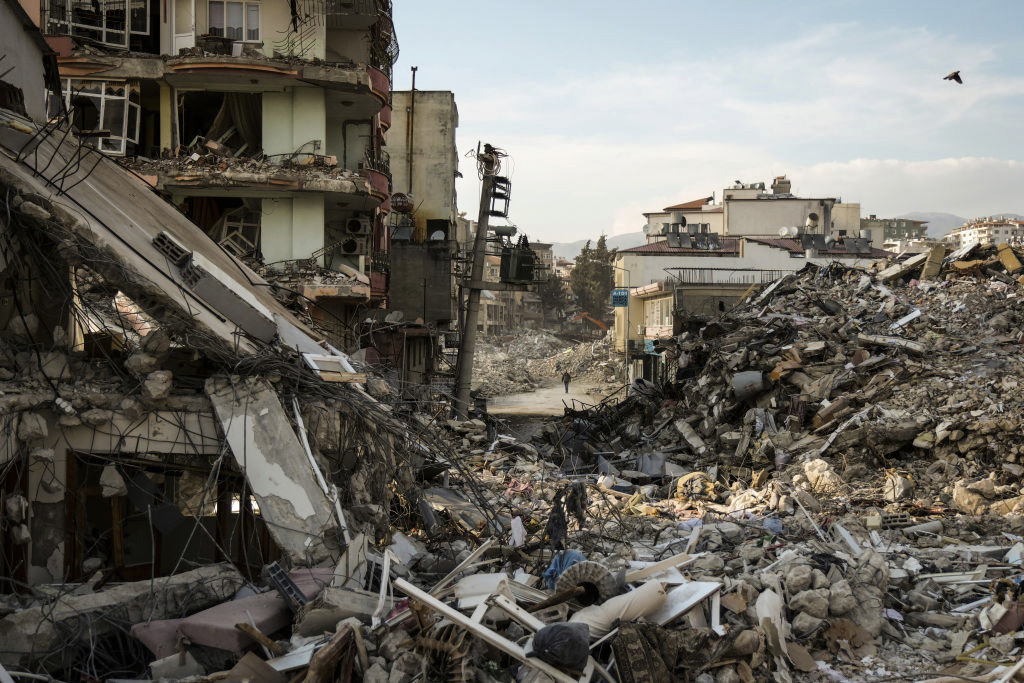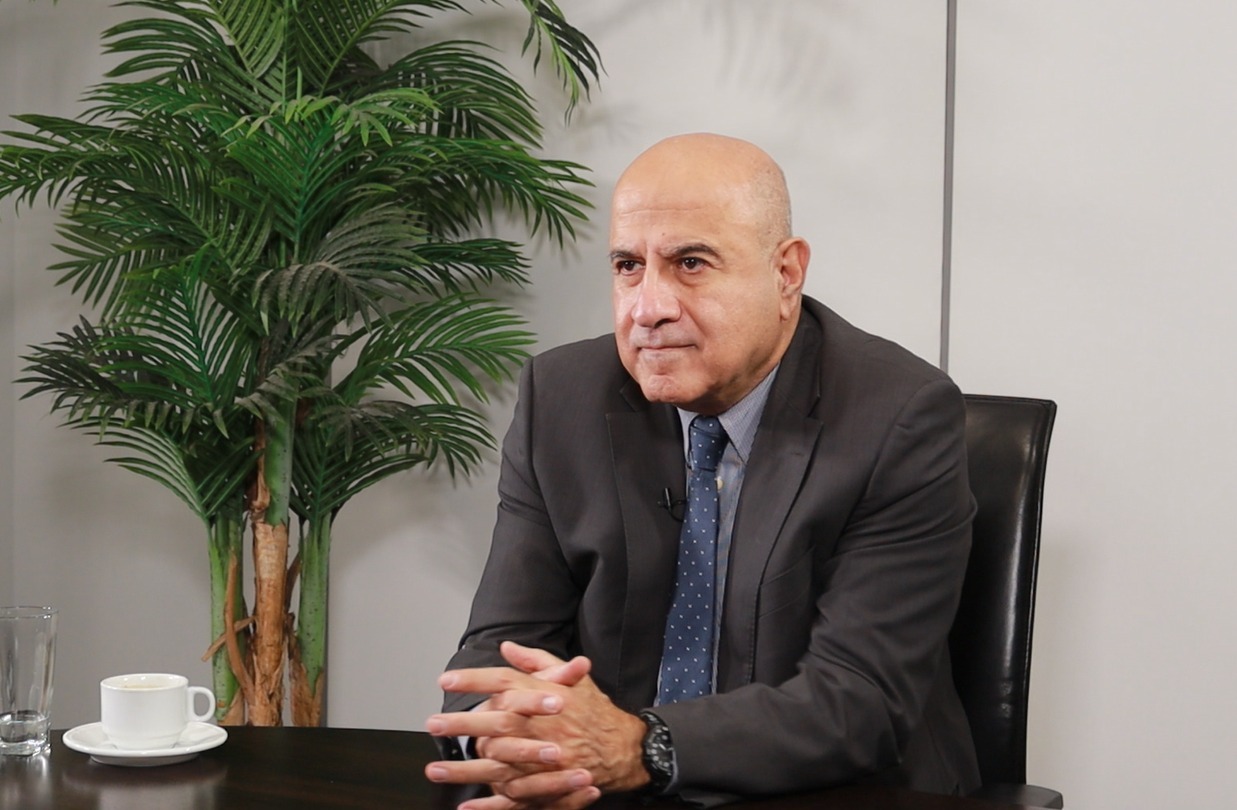بوراك بكديل/كايتستون: الزلزال في تركيا كشف العديد من الوجود القبيحة/لم يكن الزلزال الذي قتل عشرات الآلاف، بل السياسة والسلوك الانتحاري التركي على مستوى الربح الفردي
Earthquake Unveils Turkey’s Many Ugly Faces/It was not the quake that killed tens of thousands, but politics and suicidal profit-maximization behavior on individual level.
Burak Bekdil/Gatestone Institute/February 24/2023
The worst disaster in modern Turkey’s history, the earthquake killed, as of February 15, more than 35,000 people and injured 100,000. The death toll will likely reach 40,000 or more. According to one estimate, the quake will result in $84 billion in economic losses to Turkey, more than 10% of gross domestic product.
It was not the quake that killed tens of thousands, but politics and suicidal profit-maximization behavior on individual level.
[I]n the aftermath of the 1999 quake, Erdoğan said: “What broke here is not the fault line … It is [the state’s] sense of shame. This is [the result of] poor building planning and stealing from construction materials.” Now that he is in power, Erdoğan explains that the loss of life in this month’s earthquake was (God’s) fate.
As part of his election campaign in 2018, Erdoğan granted “amnesty” to 7.4 million applications for unregulated buildings in return for fees, of which his government collected more than $13 billion.
More than 10,000 buildings were destroyed in the latest earthquake.
With the amnesty, contractors were allowed to skip crucial safety regulations, increasing their profits but putting residents at risk. Few buyers and tenants could guess that those permits would be their death certificates.
One of the buildings that collapsed in Hatay, one of the worst-hit provinces, was a government hospital. In 2012, experts wrote a report that the building was not earthquake-resistant. The authorities did not mind. Ironically, a bridge in the same region, built 18 centuries ago during the Roman Empire, survived unscathed.
An Israeli relief team from United Hatzalah, after having rescued 19 people under the rubble, was forced to cut short their work in Turkey and leave the country “in the face of growing security threat to the team.” Yeni Akit claimed that “the Israeli team consisting of intelligence agents disguised as relief workers left Turkey in the face of threats and local people’s cries of ‘go home.'”
With the illegal building amnesty put in place by the government of President Recep Tayyip Erdoğan, Turkish contractors were allowed to skip crucial safety regulations, increasing their profits but putting residents at risk. Few buyers and tenants could guess that those permits would be their death certificates. Pictured: Earthquake-stricken Samandag, Turkey, on February 23, 2023.
At 4:17 am on February 6, an earthquake of 7.8-magnitude hit 10 provinces in Turkey’s east, which account for a sixth of the country’s total population. The worst disaster in modern Turkey’s history, the earthquake killed, as of February 15, more than 35,000 people and injured 100,000. The death toll will likely reach 40,000 or more. According to one estimate, the quake will result in $84 billion in economic losses to Turkey, more than 10% of gross domestic product.
The earthquake, epicentered in Kahramanmaraş province and triggered by geological fault lines, also has revealed Turkey’s socio-cultural and political fault lines. It was not the quake that killed tens of thousands, but politics and suicidal profit-maximization behavior on individual level.
Twenty-four years ago, a powerful earthquake hit Turkey’s Marmara region, including Istanbul, the biggest city, killing 18,000 people. It was one of the reasons that brought an end to the then-ruling coalition government and paved the way for President Recep Tayyip Erdoğan to become the prime minister in 2002, and later president in 2014. In his rightful criticism of the “failed state” in the aftermath of the 1999 quake, Erdoğan said,
“What broke here is not the fault line … It is [the state’s] sense of shame. This is [the result of] poor building planning and stealing from construction materials.”
Now that he is in power, Erdoğan explains that the loss of life in this month’s earthquake was (God’s) fate. After Erdoğan came to power in 2002 and promised swift measures to minimize deaths from natural disasters, 1,060 Turks lost their lives in nine earthquakes. Now it’s 1,060 plus 35,000.
Profit-related crime often goes unpunished in Turkey. After the 1999 earthquake, 2,100 building contractors were prosecuted. Of those, 1,800 were acquitted and sentences for 300 were suspended.
In the years immediately following Erdoğan’s election, government permits for housing construction tripled. Skyscrapers, bridges and smooth paved roads spread across the vast country, as a handful of construction companies with ties to the ruling party grew powerful.
As part of his election campaign in 2018, Erdoğan granted “amnesty” to 7.4 million applications for unregulated buildings in return for fees, of which his government collected more than $13 billion.
More than 10,000 buildings were destroyed in the latest earthquake.
Erdoğan had said, “We solved the problem of hundreds of thousands [who built homes without permits].” In one video, taken during a campaign stop ahead of Turkey’s 2019 local elections, Erdoğan listed some of his government’s superior achievements — including new housing for the city of Kahramanmaraş. There were government-sponsored television ads encouraging citizens to join the illegal building amnesty.
With the amnesty, contractors were allowed to skip crucial safety regulations, increasing their profits but putting residents at risk. Few buyers and tenants could guess that those permits would be their death certificates.
One of the buildings that collapsed in Hatay, one of the worst-hit provinces, was a government hospital. In 2012, experts wrote a report that the building was not earthquake-resistant. The authorities did not mind. Ironically, a bridge in the same region, built 18 centuries ago during the Roman Empire, survived unscathed.
Two years before the earthquake, several scientists and opposition members of parliament warned of the coming disaster. Erdoğan’s government simply ignored all warnings that a catastrophe was coming.
Construction is a particularly lucrative business in Turkey due to its large population (85 million) and loose regulations. According to one report, there are 453,000 licensed contractors in Turkey, compared to 3,800 in Germany, or 25,000 in the entire European Union. One of the construction companies in the earthquake zone is Özburak Inşaat, which has built 1,500 homes since 2005. The company’s owner, Hikmet Günsay, said in a recent interview: “I am a graduate of primary school.”
The Islamist newspaper Yeni Akit, a favourite of Erdoğan, claimed that the earthquake had been triggered by a U.S. oil company that was exploring in a nearby region. And in a country like Turkey, even in times of national mourning and global relief efforts, Islamists could not have missed the name “Israel.” An Israeli relief team from United Hatzalah, after having rescued 19 people under the rubble, was forced to cut short their work in Turkey and leave the country “in the face of growing security threat to the team.” Yeni Akit claimed that “the Israeli team consisting of intelligence agents disguised as relief workers left Turkey in the face of threats and local people’s cries of ‘go home.'”
In another article, Yeni Akit claimed that the earthquake may have been triggered by a neutron bomb fired by a hostile country. Several “experts” claimed that the quake was the result of the U.S. High-frequency Active Auroral Research Program (HAARP), a scientific endeavor aimed at studying the properties and behavior of the ionosphere. According to Yevgeny Fodorov, a member of the Russian parliament, the earthquake in Turkey was a U.S. attack by seismological weapons.




















